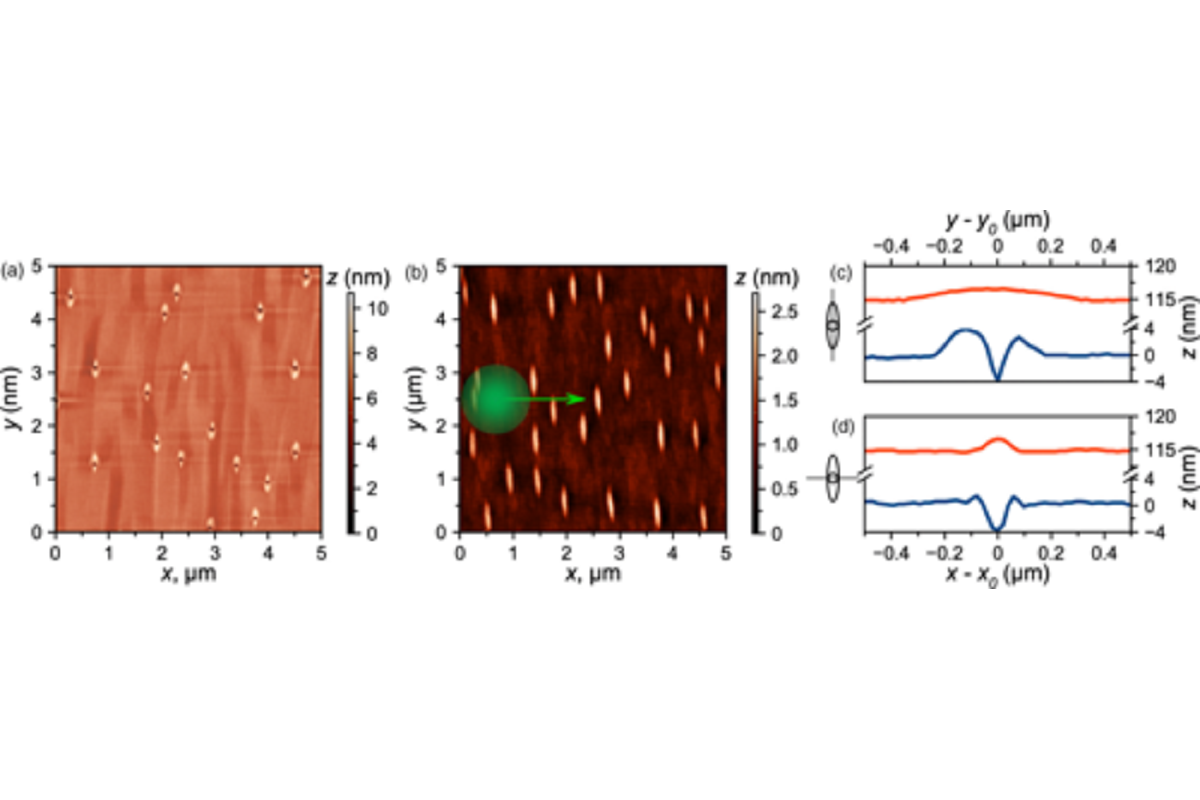Scientists from St Petersburg University explain the peculiarities of the luminescence of unstressed quantum dots
Physicists from St Petersburg University have studied the optical properties of quantum dots, for the discovery of which Alexey Ekimov, a graduate of the University, was awarded the Nobel Prize in Physics in 2023. The scientists studied semiconductor quantum dots grown by molecular beam epitaxy at St Petersburg University. These dots are unique in that they do not have mechanical stress, which makes them promising for use in new optoelectronic devices. The researchers from St Petersburg University were able to isolate the radiation from individual dots and explain the peculiarities of their spectral composition.

Gallium arsenide quantum dots are used in optoelectronic devices such as photodetectors, lasers and elements of optical computers. One of the problems with such dots is the mechanical stress caused by differences in the crystal lattices of the materials used. In their work, the researchers from the Laboratory of Crystal Photonics at St Petersburg University used a new approach to growing quantum dots.
The research findings are published in Physical Review B.
Drop epitaxy was used to create nanoholes on the surface of a gallium arsenide substrate, which were then filled with the dot material. Such samples were produced on a molecular beam epitaxy facility at the Nanophotonics Resource Centre of the St Petersburg University Research Park. The resulting quantum dot layers have minimal mechanical stress because a pair of materials with close crystal lattices – GaAs and AlGaAs – is used. The absence of stress makes it possible to create optical logic devices based on such quantum dots, which use long-lived spin cores for information processing.
The physicists from St Petersburg University conducted a detailed study of the optical properties of GaAs/AlGaAs quantum dots using microphotoluminescence and reflection spectroscopy methods. Ekaterina Deribina is a laboratory researcher in the Laboratory of Crystal Photonics at St Petersburg University. According to her, light exposure in quantum dots creates quasi-particles – excitons, which are ‘artificial atoms’ of electrons and holes in the semiconductor. When excitons recombine, the quantum dot emits light, i.e. luminesces.
The ‘colour’ of the infrared luminescence of a quantum dot depends on its shape and size. When studying such samples, other research groups found the presence of several different ‘colours’ in one sample, but no explanation was found for this phenomenon. The scientists from St Petersburg University were able to isolate the emission of individual quantum dots using microscopy.
Alexey Ekimov, a 1967 graduate of Leningrad State University (St Petersburg University), shared the Nobel Prize in Chemistry with American scientists Moungi Bawendi and Louis Brus for the discovery and study of quantum dots. Alexey Ekimov is the ninth Nobel laureate in the history of St Petersburg University.
Today, research in this field of quantum dots is continued by scientists from the Laboratory of Crystal Photonics at St Petersburg University using the scientific and technical equipment of the Nanophotonics Resource Centre. The Resource Centre has one of the few molecular beam epitaxy research facilities in Russia.
Ekaterina Deribina explained that the statistics of hundreds of quantum dots had made it possible for them to analyse the spatial correlation of the luminescence and find an explanation for it.
‘We analysed the quantum dots distributed on the surface of the sample and found that different "colours" of the luminescence correspond to different regions of quantisation of the exciton motion. The geometry of the quantum dot turned out to be more complicated than previously thought. In addition to the main central region, there are two smaller regions in each quantum dot that also restrict exciton motion on the nanometre scale. The exact geometry of the “insides” of the quantum dots has yet to be determined, but we can already control it by choosing the growth parameters,’ said Ekaterina Deribina.
The scientists from St Petersburg University are now working on creating dots with a specific luminescence spectrum in order to obtain samples suitable for studying specific physical phenomena.
St Petersburg University, the oldest university in Russia, was founded on 28 January (8 February) 1724. This is the day when Peter the Great issued a decree establishing the University and the Russian Academy of Sciences. Today, St Petersburg University is an internationally recognised centre for education, research and culture. In 2024, St Petersburg University celebrated its 300th anniversary.

